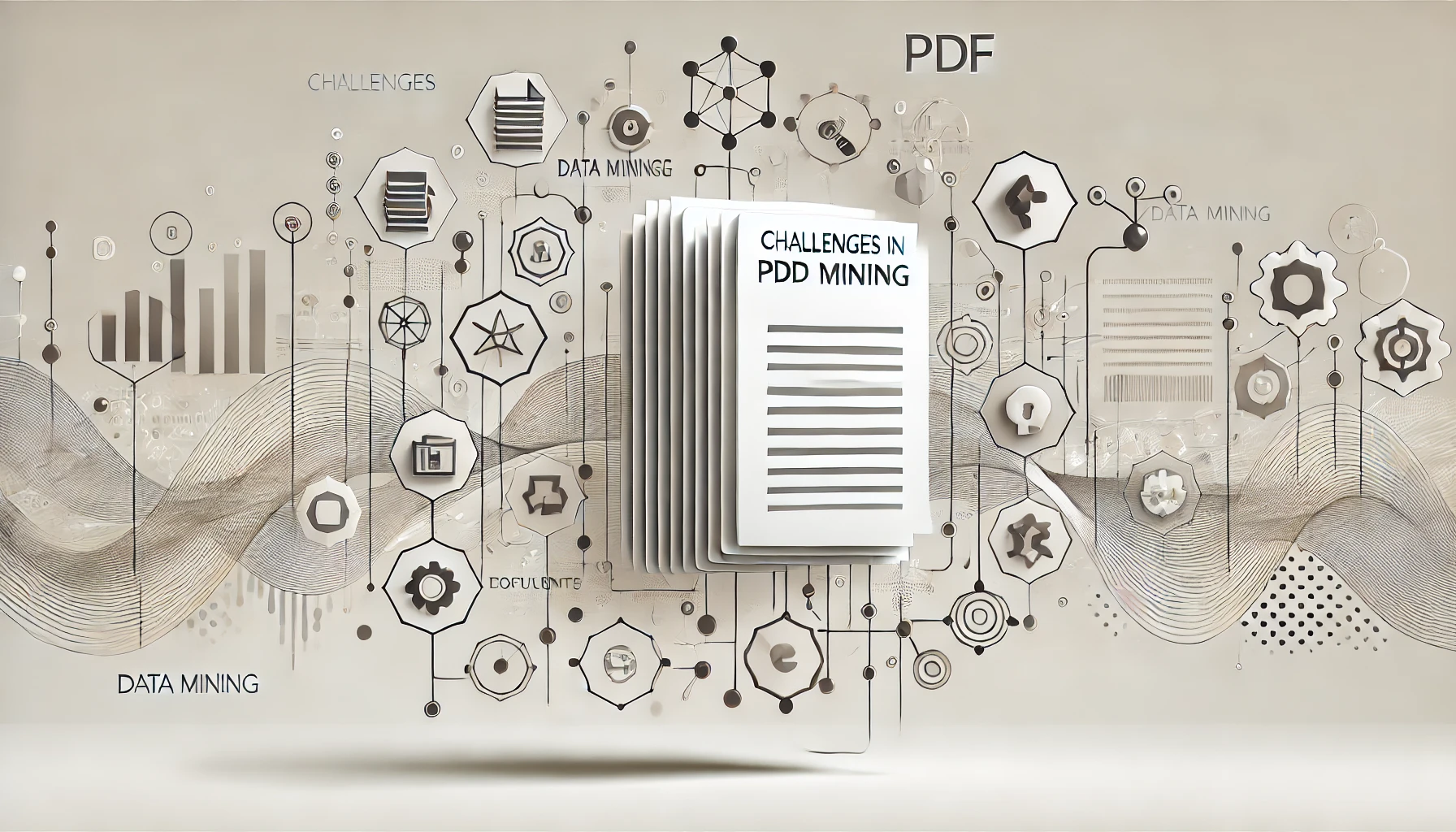Do you know the top 10 techniques to secure data in PDF mining to keep your information safe? From robust encryption methods to advanced access control mechanisms, each technique plays a crucial role in safeguarding your data. So, are you ready to explore these essential strategies that ensure the integrity and confidentiality of your valuable information during PDF mining operations?
Encryption Methods
To secure data in PDF mining, employing robust encryption methods is crucial. Data masking, which involves hiding sensitive information within a dataset, can be achieved through encryption. Access control is another vital aspect of encryption methods, ensuring that only authorized individuals can view or modify the encrypted data. By implementing strong encryption algorithms, such as AES (Advanced Encryption Standard) or RSA (Rivest-Shamir-Adleman), you can protect your data from unauthorized access during PDF mining processes.
Encryption plays a significant role in safeguarding data integrity and confidentiality during PDF mining operations. It scrambles the content within a PDF file in a way that can only be deciphered by authorized parties with the decryption key. This prevents unauthorized users or malicious software from extracting sensitive information from the PDF documents. Additionally, encryption helps maintain compliance with data protection regulations by ensuring that data is adequately secured against unauthorized access. Incorporating robust encryption methods, along with effective data masking and access control mechanisms, is essential in enhancing the security of data in PDF mining.
Password Protection
When securing data in PDF mining, implementing password protection is a fundamental measure to control access to sensitive information. Password protection allows for access control by requiring users to enter a password before being able to view or edit the content of a PDF file. It serves as the first line of defense against unauthorized access.
To enhance security further, consider implementing two-factor authentication in addition to password protection. Two-factor authentication adds an extra layer of security by requiring users to provide a second piece of information, such as a verification code sent to a mobile device, in addition to the password. This helps ensure that only authorized individuals can access the PDF files, even if the password is compromised.
Watermarking Techniques
One effective way to protect the integrity of data during PDF mining is through the use of watermarking techniques. Watermarking involves embedding information into a document that identifies data ownership and provides copyright protection. By adding visible or invisible watermarks to the PDF files, you can deter unauthorized use or distribution of your data.
Visible watermarks are typically logos, text, or patterns overlaid on the document, making it clear who owns the data and discouraging unauthorized sharing. On the other hand, invisible watermarks are encoded into the content itself, allowing for discreet data ownership identification. Both types of watermarks serve as a digital signature to establish copyright protection.
When implementing watermarking techniques, ensure that they are applied consistently across all PDF files to maintain data integrity and ownership rights. By incorporating watermarks in your PDF mining process, you can enhance security measures and safeguard your valuable information against unauthorized access or misuse.
Digital Signatures
Moving beyond watermarking techniques, another crucial aspect of securing data during PDF mining is the utilization of digital signatures. Digital signatures play a vital role in ensuring the authenticity and integrity of PDF documents. To effectively implement digital signatures, proper key management is essential. This involves securely generating, storing, and distributing cryptographic keys used to sign and verify the PDF files.
Key management is crucial to prevent unauthorized access and ensure that only trusted parties can sign or verify the documents. Additionally, digital signatures rely on trusted certificates issued by a Certificate Authority (CA). These certificates validate the identity of the signer and establish trust in the digital signature. By using trusted certificates, you can verify the authenticity of the signed PDF files and detect any unauthorized modifications. Overall, digital signatures provide a robust mechanism for securing data in PDF mining, enhancing data integrity, and establishing trust in the document’s origin and content.
Handling of Sensitive Data
To ensure the security and confidentiality of sensitive data during PDF mining, it is imperative to implement robust measures for handling such information. Begin by categorizing data based on its sensitivity through data classification. This step helps in identifying the level of protection required for different types of information. Utilize access control mechanisms to restrict unauthorized access to sensitive data. Implement user authentication, role-based access control, and encryption to ensure that only authorized individuals can view or manipulate the data.
Compliance With Data Privacy Laws
When handling sensitive data during PDF mining, one critical aspect that cannot be overlooked is ensuring compliance with data privacy laws. Privacy regulations like GDPR, HIPAA, or CCPA mandate that data must be handled securely and with proper consent. To comply with these laws, consider implementing data masking techniques. Data masking involves replacing sensitive information with fictitious data while preserving the original data format. This helps in protecting personally identifiable information (PII) and ensures that only authorized personnel can access the actual data.
Secure Storage of Mined Data
To ensure the security and integrity of mined data, it is imperative to establish robust protocols for the secure storage of information. One key technique for secure data storage is data masking, which involves replacing sensitive data with fictitious, but realistic, data. This process ensures that even if unauthorized access occurs, the actual sensitive information remains protected.
Additionally, secure archiving is crucial in safeguarding mined data. By utilizing encrypted archives and implementing access control mechanisms, you can restrict unauthorized access to the stored data. Secure archiving also involves regularly backing up the data to prevent data loss in the event of system failures or cyber-attacks.
Secure Data Transmission
To ensure secure data transmission during PDF mining, encryption plays a crucial role in safeguarding information as it travels between systems. Implementing authentication measures adds an extra layer of protection by verifying the identity of parties involved in the data exchange. Utilizing secure file transfer methods further enhances the safety of transferring mined data, reducing the risk of unauthorized access or interception.
Encryption for Secure Transmission
Utilizing encryption is imperative for ensuring secure transmission of data during PDF mining processes. Data encryption plays a crucial role in safeguarding sensitive information from unauthorized access or interception. When transmitting data during PDF mining, employing encryption techniques such as AES (Advanced Encryption Standard) or RSA (Rivest-Shamir-Adleman) ensures that the information remains confidential and secure.
Secure communication is achieved through encryption by converting the data into a format that can only be deciphered with the appropriate decryption key. This process of encoding the information protects it from being accessed by malicious entities during transmission. By implementing encryption protocols, PDF mining operations can maintain the integrity and confidentiality of the data being processed.
Authentication Measures for Data
Employing robust authentication measures is essential to ensure the secure transmission of data during PDF mining processes. User authentication is a fundamental component in securing data, where individuals are required to verify their identities before accessing sensitive information. Two-factor authentication adds an extra layer of security by not only requiring a password but also a second form of verification, such as a code sent to a mobile device. This dual authentication process significantly reduces the risk of unauthorized access to data during PDF mining activities.
Implementing user authentication measures ensures that only authorized personnel can access and manipulate data, preventing unauthorized users from infiltrating the system. Two-factor authentication further enhances security by making it harder for malicious actors to breach sensitive information. By incorporating these authentication methods, organizations can safeguard their data during PDF mining operations, mitigating the risk of data breaches and ensuring the confidentiality and integrity of the information being processed.
Secure File Transfer Methods
Secure file transfer methods are crucial for ensuring the confidentiality and integrity of data during PDF mining operations. When it comes to secure data sharing, utilizing encryption protocols such as SSL/TLS for transferring PDF files is essential. These protocols encrypt the data during transmission, preventing unauthorized access. Additionally, implementing secure file transfer protocols like SFTP (Secure File Transfer Protocol) or SCP (Secure Copy Protocol) adds an extra layer of protection against data leakage.
To enhance data leakage prevention, consider using secure file sharing services that offer end-to-end encryption and access controls. These services allow you to securely share PDF files with specific users while monitoring and restricting unauthorized access. Moreover, implementing secure file transfer methods not only safeguards sensitive information but also ensures compliance with data protection regulations.
Dealing With Hacked Data
When data has been compromised through hacking incidents, swift and strategic action is imperative to mitigate potential consequences. In the event of a data breach or cyber attack, the first step is to isolate the affected systems to prevent further unauthorized access. Quickly assess the extent of the breach to determine what data has been compromised. It is crucial to notify relevant stakeholders, including customers and authorities, about the breach to ensure transparency and compliance with data protection regulations.
Next, restore affected systems from backups or clean installations to remove any malware or backdoors left by the hackers. Conduct a thorough security audit to identify vulnerabilities that were exploited during the cyber attack and implement necessary patches or upgrades to prevent future breaches. Consider implementing multi-factor authentication, encryption, and regular security training for employees to enhance overall data security measures.
Lastly, monitor systems continuously for any suspicious activities and invest in intrusion detection systems to detect and respond to potential threats promptly. By taking proactive steps and continuously improving security measures, you can effectively deal with hacked data and safeguard sensitive information from cyber threats.
Anonymization Techniques
To enhance data privacy and protect sensitive information during PDF mining processes, one crucial aspect to consider is the utilization of anonymization techniques. Data masking is a key method used to anonymize data in PDF mining. It involves replacing sensitive information with fictitious but realistic data, ensuring that the original data cannot be traced back to individuals. By implementing data masking, you can safeguard personal details, financial information, and other confidential data from being exposed during mining operations.
Another essential aspect of anonymization techniques is identity protection. This involves obfuscating personally identifiable information (PII) such as names, addresses, and social security numbers to prevent unauthorized access. By anonymizing identities, you can prevent data breaches and protect the privacy of individuals whose information is stored in PDF documents.
Frequently Asked Questions
How Can Metadata Be Removed From PDF Data During Mining?
Alright, so you want to remove metadata from PDF data during mining? Easy peasy! Just use encryption methods or anonymization techniques. These tools help keep your data safe and sound while you do your thing.
Are There Specific Tools Recommended for Secure PDF Data Mining?
To secure PDF data mining, consider using encryption software like VeraCrypt for data protection. Employ data masking techniques with tools such as DataMasker to anonymize sensitive information, ensuring data security during the mining process.
What Measures Can Be Taken to Prevent Data Leakage During Mining?
To prevent data leakage during mining, ensure encryption methods are applied to PDF files and utilize strict access control. These measures safeguard sensitive information from unauthorized access, ensuring data security and confidentiality.
Is There a Way to Track and Monitor Access to Mined PDF Data?
Want to keep tabs on who’s snooping around your mined PDF data? You can track and monitor access, ensuring data security. Analyze the data to detect any suspicious activity easily. Stay vigilant!
How Can Machine Learning Be Integrated for Enhanced PDF Data Security?
Integrate machine learning for enhanced PDF data security by employing data encryption to safeguard sensitive information. Utilize anomaly detection algorithms to identify unusual patterns and potential threats, ensuring a robust defense mechanism against unauthorized access.



